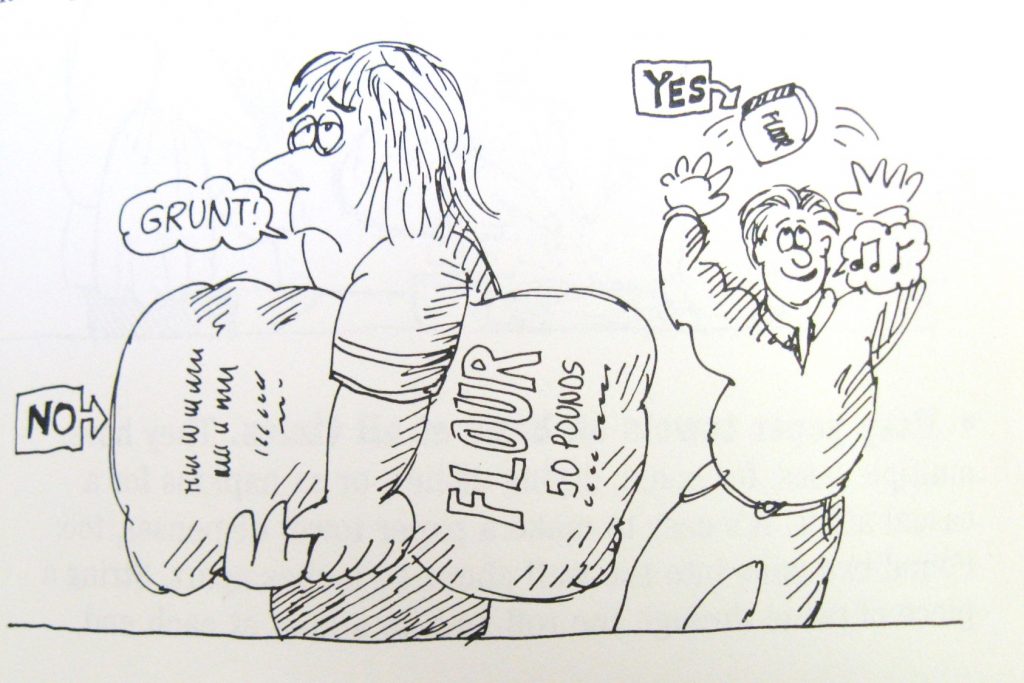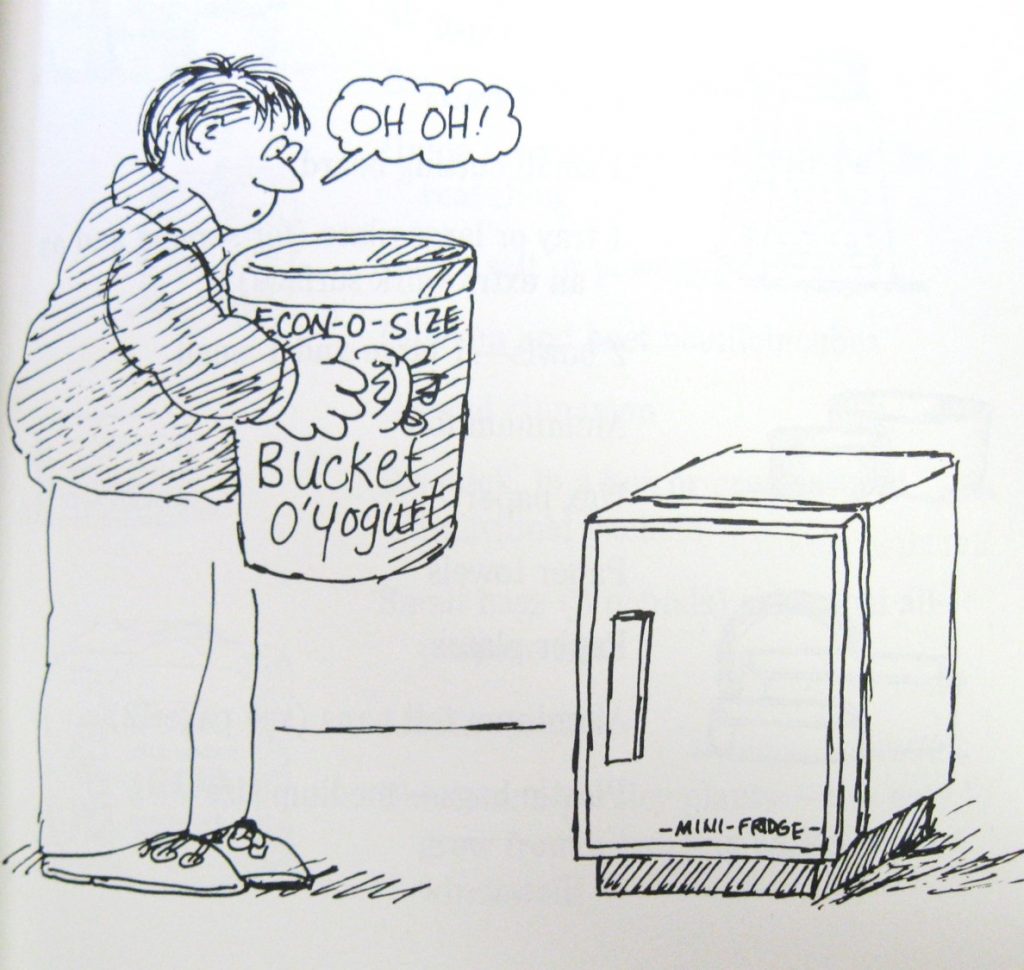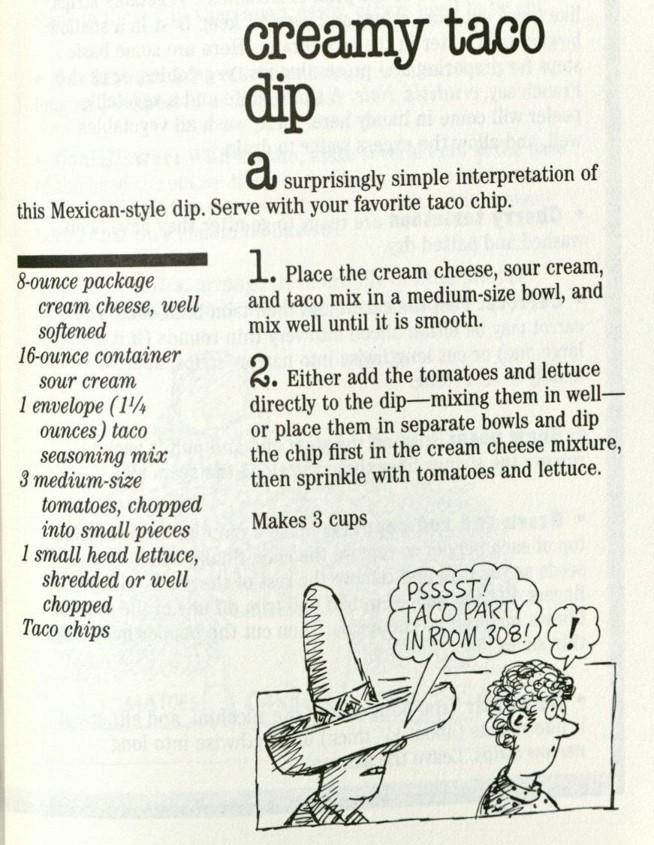Several new titles just added to “New in the North Carolina Collection.” To see the full list simply click on the link in the entry or click on the “New in the North Carolina Collection” tab at the top of the page. As always, full citations for all the new titles can be found in the University Library Catalog and they are all available for use in the Wilson Special Collections Library.
Month: August 2017
It’s back to school time! Recipes from the collection
It’s back to school time here at UNC and the campus is abuzz with students. Here are a few pointers from our cookbook collection on how to survive cooking during dorm life.


Beware buying in bulk from On campus cookbook.

Beware buying in bulk from On campus cookbook.

Quick Breakfasts to get you going from On campus cookbook.

Essentials for your dorm room kitchen from On campus cookbook.

Creamy Taco Dip from On campus cookbook.

Egg Cups from On campus cookbook.
‘Another channel of American writing was opened’
On this day in 1929: Maxwell Perkins finishes editing Thomas Wolfe’s “Look Homeward, Angel.” Number of words trimmed: 90,000.
From John Walsh in the Independent of London: “When a novel by the hopeless title ‘O Lost’ was discovered on the Scribner’s unsolicited manuscripts pile, Perkins was told to make something publishable out of it. He made thousands of notes, analysed every scene, suggested cuts and changes but delighted the author by insisting he retain the coarse, vulgar and obscene bits. ‘Look Homeward, Angel’ [as renamed by Perkins] was published and another channel of American writing was opened….”
.
UNCC prof leads women historians onto op-ed pages
“In the immediate aftermath of the horrific Charlottesville march and neo-Nazi melee, the mainstream media turned mainly to male historians for comment – just as they always have….
“But then a funny thing happened…. A bevy of women historians submitted op-eds….The [Washington] Post alone featured seven on its new history page, Made by History…. [Another] ran on the opinion page. It was by Karen L. Cox, a professor of history at the University of North Carolina at Charlotte, who managed to get another piece published in the [New York] Times – a twofer that’s virtually unheard of….”
— From “Male Historians Have Long Dominated Public Debates. Is Charlottesville a Turning Point?” by Rick Shenkman at History News Network
Climate change yet to dethrone state’s record high temp
On this day in 1983: Highest temperature ever recorded in North Carolina: 110 degrees, at Fayetteville.
Less than two years later the state’s lowest temperature will be reached at Mt. Mitchell.
Who wouldn’t have wanted to be in Wadesboro in 1900?
Belated hat tip to former Miscellany keeper Jason Tomberlin and researcher-commenter Kevin Cherry for this fact-packed post about the eclipse of 1900, when Wadesboro became the mecca of the astronomical world….
This time, alas, Anson County’s view will max out at 97.5 percent of the total eclipse.
.
Thirsty? Look elsewhere than Wilson’s war(s) memorial
“Wilson, North Carolina… has been home since 1926 to a memorial that commemorated the Revolution and the Confederacy: It originally featured a massive central column depicting the Stars and Stripes and the flag of the Confederate States of America, flanked by two water fountains — one for whites, one for blacks. It apparently outlasted its welcome sometime during the 1960s. Without fanfare, the fountain was moved from the court house to an inconspicuous park, and the fountains were replaced by small granite caps. Today you would be unlikely to recognize it as a one-time segregated water fountain….”
— From “I’ve studied the history of Confederate memorials. Here’s what to do about them” by W. Fitzhugh Brundage at Vox (Aug. 18)
Professor Brundage was into Confederate monuments before Confederate monuments were cool hot.
Does anyone have an image of the Wilson monument before its dual water fountains were removed?
When is it libelous to misidentify someone’s race?
“Although there are many decisions to the effect that it is actionable per se to call a white person a Negro, not one can be found deciding whether it would be so to call a Negro a white person. [But] one event looks, in a measure, in this direction.
“The city of Asheville, North Carolina, in 1906, contracted with a printer to have a new city directory issued. The custom of the place was to distinguish white and Negro citizens by an asterisk placed before the names of all Negroes. After the directory had been distributed, it was found that asterisks had been placed before the names of two highly respected white citizens….
“The [Raleigh News & Observer] report says: ‘On the heels of this suit brought by [the white] Mr. Lancaster, it is said that [the black] Henry Pearson is considering bringing suit against the same people because an asterisk was not placed before his name. Henry, proprietor of the Royal Victoria, a Negro hotel, complains that he has been the object of unpleasant jests since publication of the directory, and likewise inquiries as to just ‘when he turned white.’ Pearson fears that if the report goes abroad that he is a white man it will damage his hotel…’
“This case is unique; whether it has been brought to court is as yet unknown….”
— From “Race Distinctions in American Law” by Gilbert Thomas Stephenson (1910)
If Henry Pearson did in fact take his grievance to court, I haven’t found evidence thereof.
NC has its fingers pried loose from myth of 1898
“According to the historian David S. Cecelski, presenting [Alfred] Waddell as a righteous campaigner for ‘sobriety and peace’ was standard in Wilmington until the 1990s. ‘I grew up in a small town in eastern North Carolina 90 miles from Wilmington,’ Cecelski says. ‘I had a book in my middle-school classroom that listed the 12 greatest North Carolinians ever. It included the Wright brothers, Virginia Dare, and then it included three of the people who were the leaders of the white supremacy campaign.
Times change…. Historian’s belief in Lost Cause doesn’t
“Whatever the motive behind secession, once the war began the overwhelming number of Confederate soldiers, most of whom were non slaveholders, fought to defend their states, homes, and families from the invading federal armies. Such was the case with my four great uncles, poor dirt farmers who owned no slaves. Two served as privates in North Carolina infantry regiments and two carried the mail for the Confederacy. One of the former was killed in Pickett’s Charge and the other died during the Peninsular Campaign of 1862, thus becoming two of the 40,000 North Carolinians who paid the ultimate price fighting under the now much-maligned Confederate battle flag….
“I am proud of my Confederate heritage and proud to live in a state that still recognizes that heritage in its state banner.”
— From “Heritage, not hate. Let’s keep the state flag” by
An 84-year-old white Mississippian defending the Confederate flag may qualify as dog-bites-man, but Bill Scarborough is also an accomplished academic whose doctorate and bachelor’s degree are from UNC Chapel Hill and whose papers occupy 27 feet of shelf space in the Southern Historical Collection.
Scarborough’s op-ed column threw me back to 1970, when I interviewed him for the micromonthly Mississippi Freelance.
In his Confederate-flag-draped office at the University of Southern Mississippi we talked about his recent stump speeches (“I’m a segregationist, no apologies, no denials”), his brief and unhappy tenure at Millsaps College (“It had assumed that since I was a Ph.D. from the University of North Carolina that I’d be fairly liberal”) and most viscerally his fond recollection of the James Meredith crisis that wracked the state in 1962:
“The Citizens Council issued a call for men to surround the Governor’s Mansion; they had heard the federal marshals would try to arrest him [Ross Barnett]. It was great. The women brought lunches and chairs, and there was patriotic music coming over the loudspeakers…Emotionally, it was the high spot of my life. For the first time I could really see how the Civil War took place….”
So, no, I wasn’t surprised to see Scarborough’s attachment to the Confederacy undiminished by the intervening 47 years….
